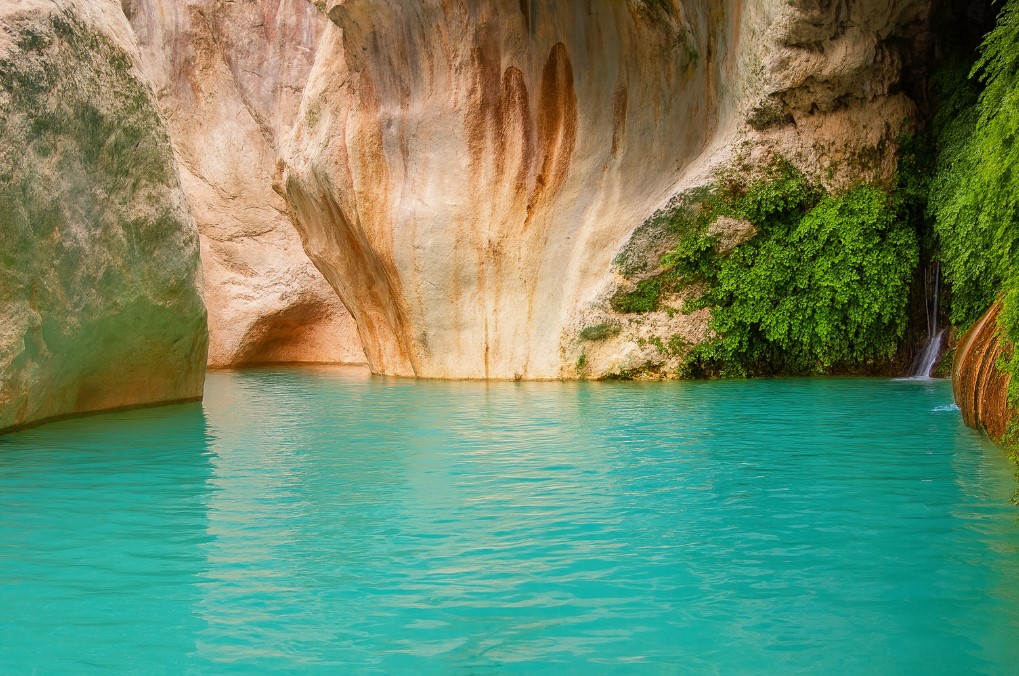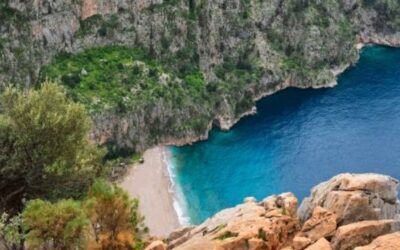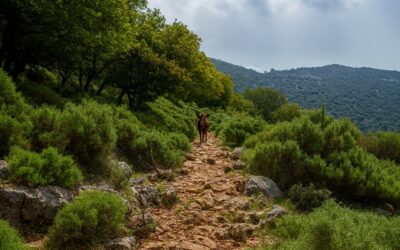One of Turkey’s deepest canyons, Saklıkent is not only a destination for nature enthusiasts but also for those in search of stories. Situated between Antalya’s Kaş district and Muğla’s Seydikemer district, this extraordinary natural wonder is a mesmerizing stage where humanity’s struggle, patience, and admiration for nature intertwine. Yet, the story of Saklıkent is not merely about the geological formation of a canyon — it is the tale of water and rock dancing together for thousands of years, and of humankind’s enduring attempt to make peace with nature.
A Tale Written by Nature’s Patience
Stretching approximately 18 kilometers long, Saklıkent Canyon was carved thousands of years ago by snowmelt flowing down from the Taurus Mountains through limestone rocks. But in this story, the patience of time is as significant as the power of water. Every drop, every seep, every shifting pebble has shaped the canyon’s walls we see today. In some places, the walls rise as high as 300 meters — so tall that even at noon, sunlight barely reaches the canyon floor. This is why it is called “Saklıkent,” meaning “hidden city.” When you step inside, you become completely detached from the outside world; it feels as if you’ve entered the heart of nature — a silent temple of serenity.
The True Story of the First Discovery
Saklıkent’s story is also one of human courage. Until the late 1980s, local villagers had never ventured into the deep rift. According to legend, they believed the narrow gorge was home to spirits and avoided entering it out of fear. One day, however, a brave shepherd named Ali Efeoğlu followed the sound of running water echoing from within. Wading through knee-deep water and darkness, he reached a glowing blue shimmer. That day, Saklıkent’s mystery was first unveiled by human hands. Following his discovery, the canyon drew the attention of scientists and nature lovers alike. In 1996, it was declared a National Park, opening a new chapter for both ecotourism and the local economy. Today, tens of thousands of visitors follow in that shepherd’s footsteps, journeying into the heart of Saklıkent each year.
The Canyon’s Voice: A Dialogue of Water, Rock, and Wind
As you walk through Saklıkent, you don’t just hear the sound of running water. The echoes from the cliffs, the soft hum of the wind gliding through the canyon, and the splashing of your footsteps blend together to create a natural symphony. The canyon is one of nature’s purest acoustic halls. In certain areas, small waterfalls formed by the force of water create spaces ideal for meditation. Especially in the early morning, the mist amplifies the natural sounds, enveloping visitors in a sense of tranquility. Every sound feels like part of a conversation — a dialogue among water, rock, and wind. This harmony offers not just a visual spectacle but also a spiritual journey. As visitors lose themselves in this atmosphere, they begin to feel nature’s peace resonating within. The gentle breeze weaving through the depths becomes a melody that touches the soul. Thus, Saklıkent is not merely a natural wonder — it is a celebration of the harmony of sounds and nature itself.
Traces of Mythology and Local Legends
For the Yörük nomads who have long lived around Saklıkent, the canyon holds profound meaning. They believe it possesses a protective spirit. According to ancient tales, “water nymphs” once lived within the canyon. Each spring, their faint singing could be heard mingling with the flow of the water — a sound believed to bring abundance and prosperity. Some researchers suggest these myths are linked to the water goddesses of Lycian mythology. Since Saklıkent lies near the borders of the ancient Lycian civilization, it is thought to have served as a ritual site in antiquity. Perhaps the canyon’s enchantment stems from both scientific and mystical roots. These legends reflect the locals’ respect for nature and their effort to understand its spiritual essence. The mythic stories of Saklıkent highlight the deep bond between humans and the natural world, revealing the rich cultural and historical layers of the region.
Saklıkent Today: Nature, Adventure, and Silence
Today, Saklıkent is not merely a place for hiking or rafting — it symbolizes slow living, mindfulness, and reconnection with nature. Many visitors who walk through the canyon discover not only the landscape but also themselves. This journey begins with finding inner peace amid nature’s stillness. As you move deeper into the canyon, each step takes you further from the noise of everyday life. The small wooden bridge at the entrance serves as a metaphor for the entire experience: “Crossing to the other side of nature” is, in fact, approaching oneself. The emotions felt while crossing the bridge — combined with the cool mountain breeze — purify the soul. Every moment in Saklıkent becomes a journey, both outward and inward. The initial chill of stepping into the water symbolizes the unraveling of all the noise and worries imposed by urban life.
For the locals, Saklıkent National Park has also become a story of transformation. Once a place where only goats grazed, the valley is now a thriving example of ecotourism and sustainable development. Family-run cafés, traditional gözleme stalls, and Yörük tents around the canyon preserve the region’s authentic cultural texture. Saklıkent thus stands not only as a natural wonder but also as a living example of tourism that harmonizes with local life.
Lesser-Known Facts About Saklıkent
Saklıkent Canyon is one of Turkey’s most breathtaking natural wonders, with many hidden details waiting to be discovered. Some sections of the canyon can be explored only a few months of the year, as melting snow from the mountains raises the water level to several meters, making certain areas inaccessible. While exploring this majestic site, visitors may also encounter traces of history — such as ancient carvings and natural caves associated with the Lycian civilization, which add to its cultural and historical significance.
During summer, temperatures in the region can reach 40°C, yet within the canyon, the air remains a cool 10–12°C, making it a refreshing escape from the heat. Another unique experience offered to visitors is the “silent walk” — guided tours where participants move in complete silence, focusing solely on the sounds of nature.




